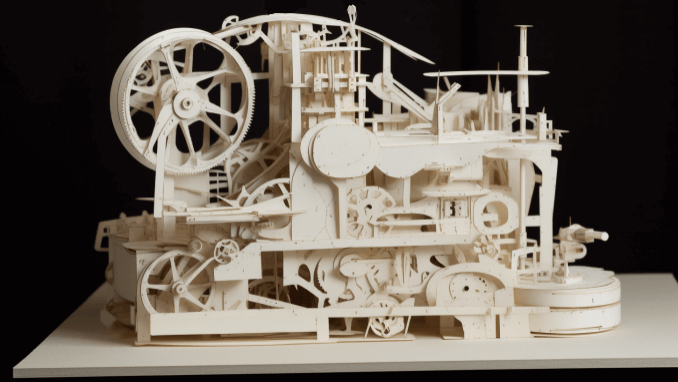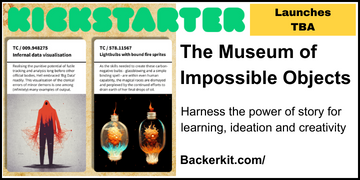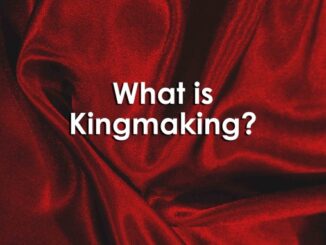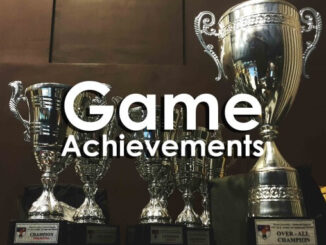
Ludogogy has entered into an agreement with Gamification Journal, based in Seoul, South Korea, for the mutual exchange of articles. This is the fifteenth of those articles we are publishing and it was in exchange for Micael Sousa’s article on gamification of strategic planning with a COTS boardgame.
The key to designing board games is to set the core mechanism which will provide the fun in the game, and then connect the sub-mechanisms to make various interesting interactions.
When we design a board game, the core mechanisms, and paper prototypes are the key to continuously providing feedback and improving the game, and to ensuring that the experience of play will be fun.
I will explain what the core mechanism and paper prototype are, and provide a way to structure the core mechanism, and the checklist of the paper prototype.
Core mechanism
In board game design, the core mechanism is the most simple and yet most complex one which the designer will have to think deeply about. This will be the part of the game they will consider most, even when, and probably especially, when several mechanisms are applied.
The core mechanism is what the player recognizes as the most notable feature among the structured systems in the board game, and the most frequent driver of behavior from the start to the end of the game. This is the heart of the game, and all players will get the opportunity to continue the play as new information becomes available to them through the game narrative.
The core mechanism is a model for implementing the major behaviors and progress activities in the game, as well as providing the fun. We can see this is in the core mechanic diagram model which Charmie Kim published in Gamasutra, which is a useful guide to design. In the early stages of board game design, this diagram is useful for communicating the key ideas of the game to others, and for defining the interaction and complexity in the play mechanisms.

The center of this model is the core mechanism which is the key of the game. There is a layer of secondary mechanics, and then progression around the core, and the narrative is outside of that. This comprises the system through which the core mechanism interacts with the game. So, we can easily understand how players can communicate with the game through the interaction.
- The core mechanism is the key to the game and the system through which players interact most frequently in an intentional way. It’s an expression of the game theme or genre. Also, it should be selected to be effective in achieving the game objectives.
- Sub-mechanisms are optional or infrequent interactions. They need to be selected and designed to support the core mechanism.
- The progress system is the source of change in the game. This could be achieved by using events or hidden information.
- Narrative must be designed to be consistent with every other internal layer and to provide a way of eliciting emotion from the player.
Paper prototype
A paper prototype is a tool to use at the early stages of game design to test ideas and check that the experience is fun. It’s necessary for developing board games.
And not only in board games, but in digital game development, the paper prototype is very useful in the early stages of game design to ensure the success of the project and minimize losses through development cost and wasted time. Paper prototype has become very popular in many companies because the many variables in development projects can be immediately analysed, redesigned, and iteratively modified. Also, there are many other positive aspects of the paper prototype.
- Flexibility – Expression of interaction can be quickly confirmed and modified.
- Quickness – Ideas and fun are quickly tested.
- Economical – Development cost is low because only paper and pen are required.
- Accessibility – Everybody can make the prototype because purchasing the materials and developing are easy.
- Scalability – Ideas are freely modified and developed.
- Mobility – It can be implemented anytime and anywhere.

The board game designer has to select the core mechanism for the fun of play and connect the sub-mechanisms for various interactions in game design.
Questions to ask when using paper prototypes
When using paper prototypes to test game concepts, checking whether the game components function well together to create fun experiences is very important.
- Who is the player? Is this a playable game from that player’s perspective?
- Are the rules clear? Are they understandable and how easy is it to arbitrarily change and break them?
- To what extent is the prototype complete? Can others play the prototype?
- What kind of fun can this game provide? Does this fun have the power to attract people?
- Is play duration appropriate? Is it too long or short?
- What games are similar to this one? Are those too rare or similar?
- Does the player need to prepare a lot for playing the game? Can player easily participate without difficult preparation?
- What meaning does this game provide to individuals, organizations, or society? What is the balance of Fun and Meaning?
Everybody wants to make a fun board game, but many people fail to do this because they ignore the importance of appropriate mechanism design, and the prototyping and testing to ensure these work well.
To make a good game, we have to experience various games, analyze the original games, and correctly select the ideas and mechanisms that work for our game idea. In addition, making a prototype and getting external feedback through play tests is most important. So, repeating this is the most important task.
- Core Game Mechanisms and the Paper Prototype - 25th April 2023







Be the first to comment